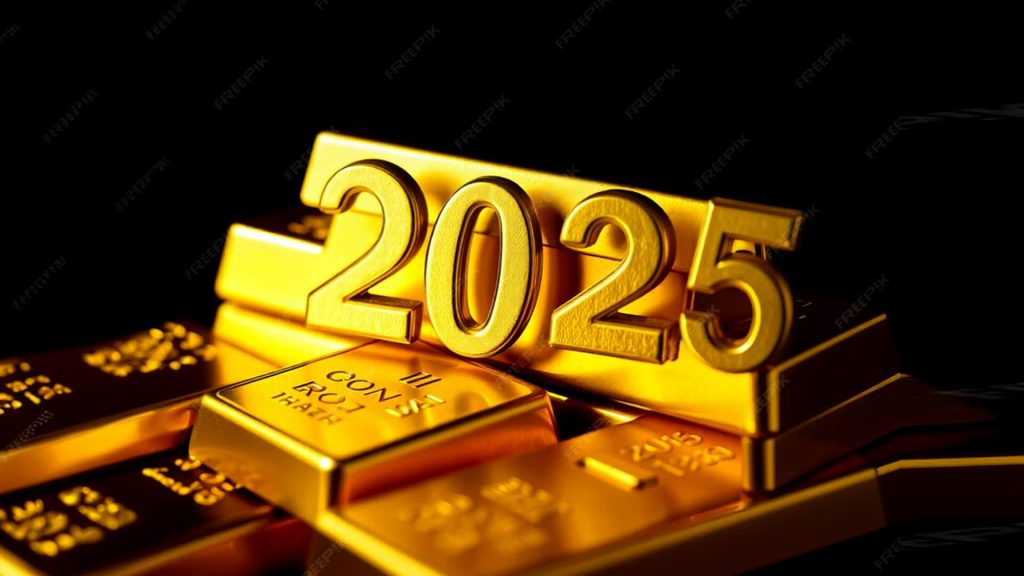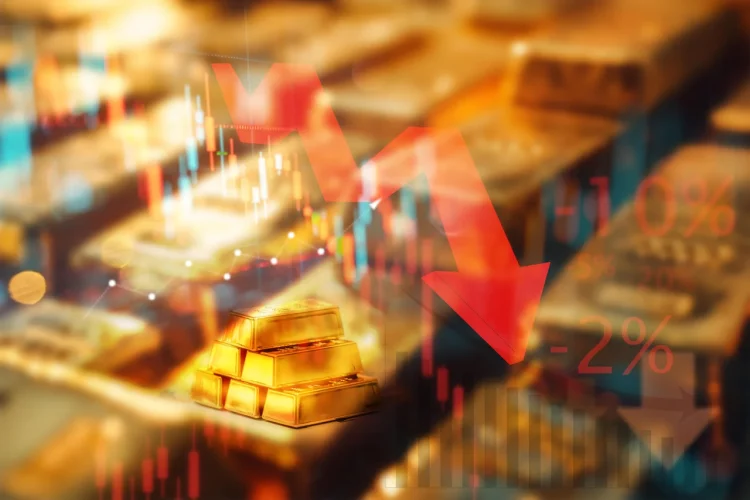As we approach 2025, the gold market is poised to face an array of challenges and opportunities that will shape its trajectory in the coming years. With expert opinions offering diverse insights into the future of gold, this article aims to explore the key predictions, market trends, and factors influencing gold prices in 2025. Whether you’re a seasoned investor or a newcomer to the world of gold, understanding how global economic and political shifts could impact the market will be crucial for making informed investment decisions. In this article, we will break down expert predictions for 2025, examine key market trends, and discuss how you can adjust your investment portfolio in response to these insights.
Expert Predictions for the Gold Market in 2025
The gold market is notoriously difficult to predict, as its price movements are influenced by a variety of global factors. However, experts have offered their best predictions for what 2025 may hold for gold. According to several analysts, the future of gold in 2025 will likely be shaped by ongoing economic instability, geopolitical tensions, and the broader financial environment.
1. Gold as a Safe Haven Investment
Many experts predict that gold will continue to be viewed as a safe haven for investors. With global uncertainties such as inflation, political instability, and economic slowdowns on the horizon, gold is expected to maintain its status as a hedge against risk. A number of financial analysts believe that, as long as inflation rates remain high and central banks’ monetary policies continue to be unpredictable, gold will provide a solid store of value.
In 2025, it is likely that gold’s appeal as a safe haven will remain strong, especially if other traditional investments—such as bonds and equities—face volatility. This perspective is supported by historical trends, as gold has performed well during times of global turmoil, making it an attractive asset during uncertain periods.
2. Gold’s Potential Growth Amid Financial Market Volatility
Experts also predict that gold could see substantial price growth in 2025, particularly as financial markets continue to face volatility. The increasing uncertainty surrounding economic factors, such as global supply chain disruptions, fluctuating commodity prices, and potential recessions in major economies, may lead investors to turn to gold for protection. Additionally, the ongoing trend of central banks diversifying their reserves to include more gold may also contribute to its price appreciation.
The demand for gold could be driven by these macroeconomic factors, with many analysts forecasting that gold prices could reach new highs in 2025 if market conditions remain favorable.
Key Market Trends Influencing Gold’s Price and Demand
Several key market trends are expected to shape gold’s price and demand in 2025. Understanding these trends will help investors navigate the evolving gold market and make informed decisions based on broader economic developments.
1. Inflation and Its Impact on Gold Prices
One of the most significant factors influencing the price of gold in 2025 will be inflation. Following the pandemic, many countries have seen inflation rates reach multi-decade highs, driven by factors such as increased government spending, supply chain disruptions, and rising energy prices. Gold has long been considered an effective hedge against inflation, and many experts predict that this trend will continue in 2025.
As inflation erodes the purchasing power of fiat currencies, gold’s value as a store of wealth becomes more pronounced. If inflation continues to rise in 2025, gold prices could see upward pressure, with investors flocking to the metal as a safeguard against the diminishing value of traditional currencies.
2. Central Bank Gold Purchases
Central banks have been increasingly active in purchasing gold in recent years, and this trend is expected to continue into 2025. As part of their efforts to diversify their foreign exchange reserves, many central banks—particularly in emerging markets—have been adding gold to their holdings. This increased demand for gold from central banks could help sustain upward price momentum in 2025, as these institutions tend to purchase large quantities of gold, influencing overall market dynamics.
A report by the World Gold Council notes that central bank gold purchases reached a record high in 2022, signaling their growing belief in gold’s long-term value. In 2025, these purchases are expected to continue, providing strong support for gold prices.
3. Geopolitical Tensions and Gold’s Role as a Hedge
Geopolitical tensions are another key driver of gold’s price in 2025. As political instability rises in various parts of the world, including the ongoing trade wars, regional conflicts, and tensions between major powers, gold’s status as a safe haven will continue to attract investors. Historically, gold has performed well during times of geopolitical uncertainty, as it provides a tangible asset that is less susceptible to political risks.
In 2025, geopolitical issues, such as conflicts in the Middle East, tensions between the U.S. and China, and other regional crises, could lead to higher demand for gold. Investors seeking to hedge against the risks of instability may drive up gold prices during these times of uncertainty.

How Global Economic and Political Shifts Will Affect Gold’s Future
The future of gold in 2025 will be intricately tied to global economic and political shifts. As we look ahead, several key events and developments could impact gold’s price and demand, including shifts in global economic growth, interest rates, and the global geopolitical landscape.
1. Interest Rates and Gold’s Appeal
Interest rates will play a significant role in determining gold’s performance in 2025. Central banks around the world are likely to adjust interest rates in response to inflation and economic growth. Typically, gold performs better when interest rates are low or when central banks are not tightening monetary policy aggressively. If central banks continue to keep interest rates low in an effort to stimulate growth or combat inflation, gold could become more attractive to investors.
Conversely, if central banks increase interest rates significantly to curb inflation, this could reduce gold’s appeal, as higher rates would make other investments, such as bonds, more attractive relative to gold. Therefore, the pace and direction of interest rate changes in 2025 will be crucial for determining the price movements of gold.
2. Economic Growth and Gold Demand
The global economy’s growth trajectory will also affect gold’s demand in 2025. If major economies such as the U.S., China, and the European Union experience sustained economic growth, there could be an increase in industrial demand for gold, particularly for use in electronics and technology. At the same time, continued economic expansion could contribute to inflationary pressures, further driving up gold prices as a hedge.
However, if global economic growth slows, as some experts predict, gold’s safe haven status could see an increase in demand. A slowdown in economic growth may lead to lower confidence in other investment classes, prompting investors to seek the stability and safety of gold.
Adjusting Your Portfolio in Response to Expert Opinions on Gold’s Outlook
As experts provide their opinions on the future of gold, it is crucial to consider how to adjust your investment portfolio in response to these insights. Gold is known for its ability to act as a diversification tool, offering protection against risks and acting as a hedge against inflation.
1. Diversifying with Gold
If you anticipate that 2025 will bring further volatility and economic uncertainty, increasing your exposure to gold could be a prudent strategy. Experts recommend diversifying your portfolio by incorporating various forms of gold investments, such as physical gold (bullion, coins), gold ETFs, and mining stocks. By diversifying across different types of gold assets, you can benefit from the metal’s price appreciation while managing risk.
2. Allocating to Gold During Times of Geopolitical Uncertainty
If geopolitical tensions rise in 2025, as many experts predict, gold could become a more attractive investment. It may be wise to increase your allocation to gold during periods of geopolitical instability. Having a portion of your portfolio in gold could provide peace of mind and protection during times of heightened risk.
3. Rebalancing Your Portfolio Based on Inflation Expectations
Inflation expectations will also play a key role in shaping your gold investment strategy for 2025. If experts predict that inflation will continue to rise, it may be beneficial to increase your allocation to gold, as it tends to perform well in inflationary environments. Rebalancing your portfolio in response to inflationary pressures can help protect your wealth against the erosion of purchasing power.
Conclusion
The outlook for gold in 2025 remains complex, with expert opinions offering a mix of optimism and caution. While gold is likely to remain a safe haven investment amid ongoing economic and geopolitical uncertainties, its performance will be influenced by key factors such as inflation, interest rates, and central bank policies. By staying informed about these market shifts and adjusting your portfolio accordingly, you can position yourself to take advantage of the opportunities gold presents in the year ahead.



































